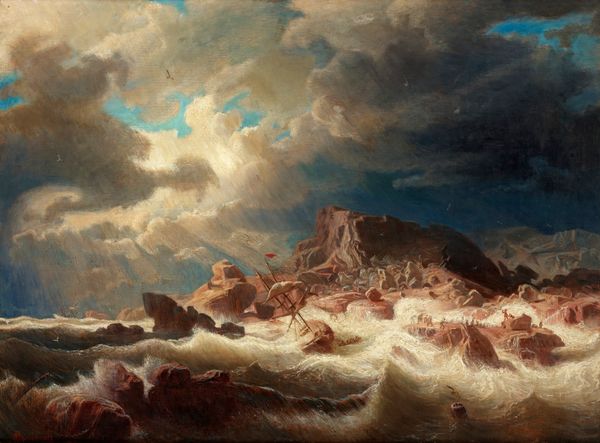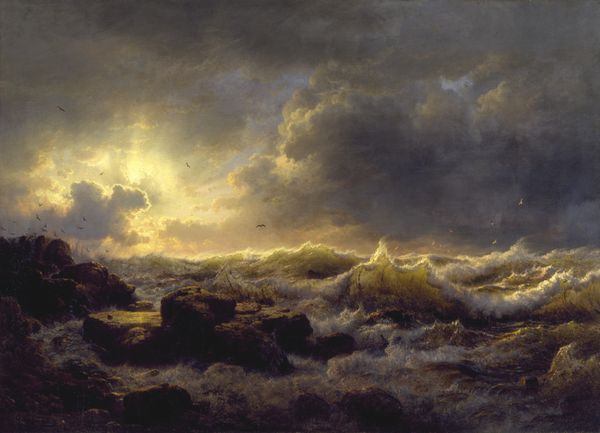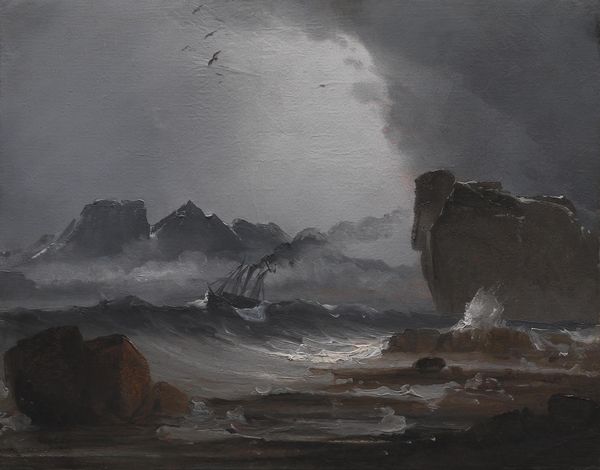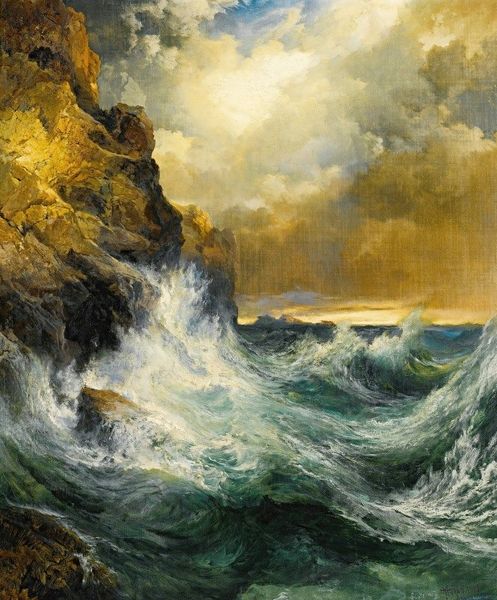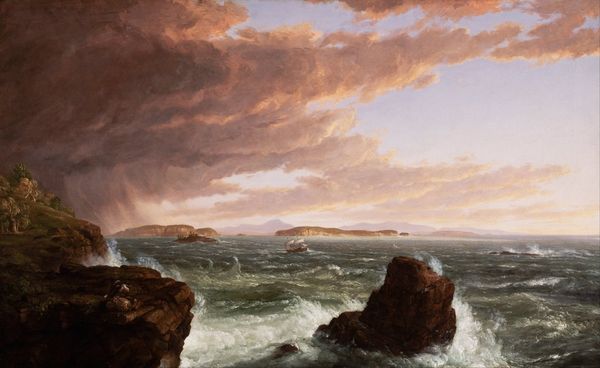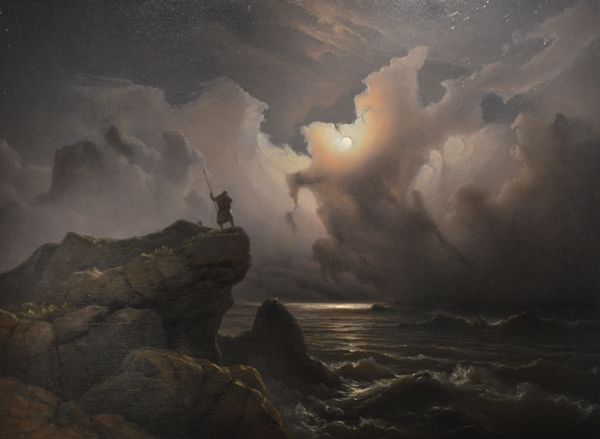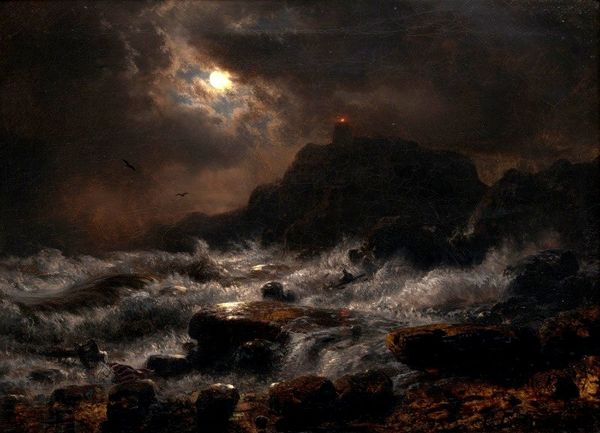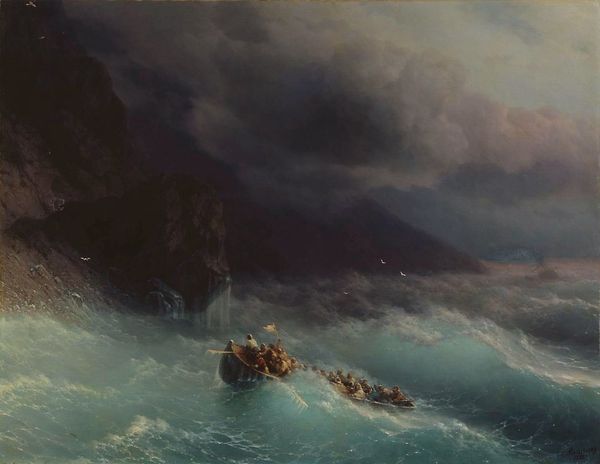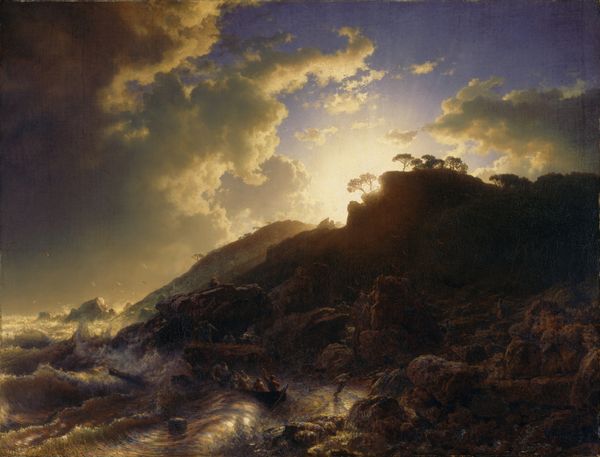
Puget Sound on the Pacific Coast 1870
0:00
0:00
albertbierstadt
Seattle Art Museum (SAM), Seattle, WA, US
Dimensions: 133.4 x 208.3 cm
Copyright: Public domain
Curator: Albert Bierstadt's "Puget Sound on the Pacific Coast," painted around 1870, captures the dramatic landscape of the Pacific Northwest. It is truly spectacular. Editor: My first thought is "tempestuous". The dramatic sky and surging waves certainly give that impression, despite the serenity that pervades parts of it. Curator: Bierstadt, a key figure in the Hudson River School, made numerous sketching trips, and although many have suggested he never visited the Sound itself, he expertly crafted scenes to stir specific feelings through his skillful manipulation of oil paint. What is key to note, the landscapes he sold conformed to consumer preferences, and fueled settlement further West. Editor: Exactly. This wasn't just about landscape painting. It played into Manifest Destiny, and the forced displacement of indigenous populations that accompanied that ideology. The scale and romantic idealization invite the viewer to embrace that project, to seek ownership over what’s represented here. It speaks to the history of power relations between colonizers and the colonized, portraying an unbalanced social context of territorial expansion. Curator: You see it in the figures, right? Indigenous people onshore and within canoes—small in the frame but very busy negotiating the waves, laboring under an oncoming squall. The land and sea, so fraught with their exploitation. Bierstadt’s ability to manage light in relation to texture, especially evident in the water and rock formations, highlights this inherent tension that underpins all those consumer relations in Western territories. Editor: I think too, by painting on a large canvas like this one, Bierstadt also commodifies his artworks, further enticing the purchase power of wealthy white landowners looking to display what they believed they possessed or soon would. And, his work circulated widely as photogravures. That distribution matters. It all circles back to land use. Curator: And the construction materials; we understand this was produced as part of a manufacturing ecosystem which also provided rail, bridges and industrial parts to construct this new West—all this activity created massive alterations of land and lifestyles. It shows that what we are calling "art" must also be looked at in terms of economic incentives and consequences. Editor: Yes, there's that dark, unspoken narrative within these romantic landscapes. Considering its past illuminates its present, allowing us to interpret its narrative not just as pretty pictures of the West, but through socio-political lenses to consider themes of colonization, landscape as capital, and artistic commodification. Curator: Understanding the labor and materials is how we can unveil art's less visible connections and roles.
Comments
No comments
Be the first to comment and join the conversation on the ultimate creative platform.
